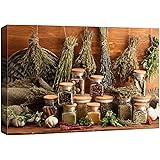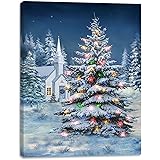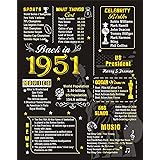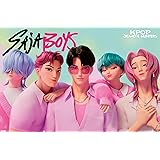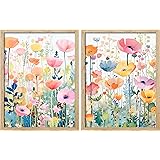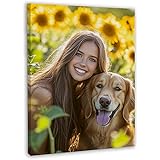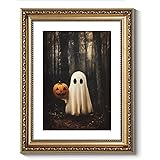The world of interior design is constantly evolving. Staying current with emerging aesthetics proves essential. As seen in the accompanying video, discerning what’s trending can be quite decisive. Future-focused decisions are being made by top designers now. This guide explores the anticipated **2025 Interior Design Trends**. We delve deeper into specific elements. We aim to clarify why certain styles are being embraced. Others are gradually falling out of favor.
Anticipating shifts helps homeowners and professionals alike. Understanding these dynamics is key. This article builds on the video’s rapid-fire “in” and “out” assessments. We offer detailed insights. This allows for more informed decorating choices. Prepare to discover the innovative ideas being celebrated. Also, note the outdated concepts being left behind. Embrace the future of home aesthetics.
Embracing New Directions in 2025 Interior Design Trends
Color Palettes: Warmth and Earthiness Prevail
Cool gray tones are being moved aside. A significant shift toward warmth is observed. Rich, earthy palettes are becoming prominent. These include terracotta, sage green, and muted ochre. Beige and cream are also highly favored. Natural light is complemented by these colors. They create an inviting, serene atmosphere. Spaces are felt to be more grounding. This contributes to a sense of calm. The stark, industrial feel is being replaced. Warmer, more organic environments are desired.
Sustainable Materials: Conscious Choices for Homes
The demand for eco-friendly options is increasing. Sustainable materials are highly prioritized. Reclaimed wood is being integrated into designs. Recycled glass and natural fibers gain popularity. Materials like cork, bamboo, and jute are also used. These choices reduce environmental impact. They also introduce unique textures. A connection to nature is being fostered. Fast, disposable furniture is being rejected. Longevity and ethical sourcing are valued. This commitment reflects a growing awareness.
Furniture Forms: Curves and Comfort
Sharp, angular lines are being softened. Curved furniture designs are becoming a dominant feature. Sofas with rounded edges are seen frequently. Chairs boasting organic, sculptural forms are trending. These elements create a welcoming appeal. They also add visual softness. The overall comfort of a space is enhanced. Overly structured or rigid pieces are out. A more fluid and relaxed aesthetic is preferred. This trend emphasizes coziness and ergonomic design.
What is Fading: Outdated Interior Design Trends for 2025
Overly Industrial Aesthetics: Less Raw, More Refined
The raw, exposed industrial look is diminishing. Bare brick walls and visible ductwork are less common. This style often felt cold and unwelcoming. It lacks the desired warmth for modern homes. A more refined approach is being adopted. Industrial elements are still possible. They are now integrated subtly. The overall design feels much softer. Harsh, purely utilitarian spaces are out. Comfort and sophisticated finishes are being chosen.
Cold, Sterile Minimalism: Personal Touch is Key
Strict, unadorned minimalism is being reevaluated. Spaces once devoid of personality are less desired. This approach often created a clinical feel. Homes are meant to reflect their inhabitants. Sterile environments are being rejected. A lived-in, personalized aesthetic is now preferred. Minimalist principles still apply. They are now balanced with unique touches. Personal stories and collected items are being displayed. Homes feel more authentic and inviting.
Fast Furniture and Disposable Decor: Quality Over Quantity
The era of mass-produced, short-lived items is ending. Fast furniture purchases are declining in favor. These pieces often lack durability. They also contribute to waste. A renewed focus on craftsmanship is seen. Investment in quality pieces is encouraged. Items with lasting appeal are sought. Disposable decor is being phased out. Consumers are choosing conscious consumption. This supports sustainability and timeless style.
Key Elements Shaping 2025 Interior Design Trends
Biophilic Design: Bringing Nature Indoors
The integration of nature is paramount. Biophilic design principles are widely applied. Living plants are essential elements. Natural light is maximized wherever possible. Water features are being incorporated. Materials like stone and wood are used extensively. These additions create tranquil environments. They promote well-being and productivity. A stronger connection to the natural world is formed. This approach redefines indoor living spaces.
Personalized Spaces: Celebrating Individuality
Generic designs are being forsaken. Homes are increasingly tailored to individual tastes. This involves showcasing unique collections. Art pieces hold significant personal meaning. Bespoke furniture reflects specific needs. Designers focus on storytelling through objects. Mass-market aesthetics are out. A truly bespoke experience is highly valued. Spaces become reflections of identity. This enhances comfort and personal connection.
Smart Home Integration: Seamless Technology
Technology is becoming invisible. Smart home devices are integrated fluidly. Automated lighting and climate control are common. Voice-activated systems are seamlessly hidden. Clunky gadgets are being removed. The emphasis is on effortless control. This enhances daily convenience. Technology supports comfort, not just utility. Its presence is felt, not explicitly seen. This allows for a more streamlined aesthetic. The latest **2025 Interior Design Trends** focus on user experience.



